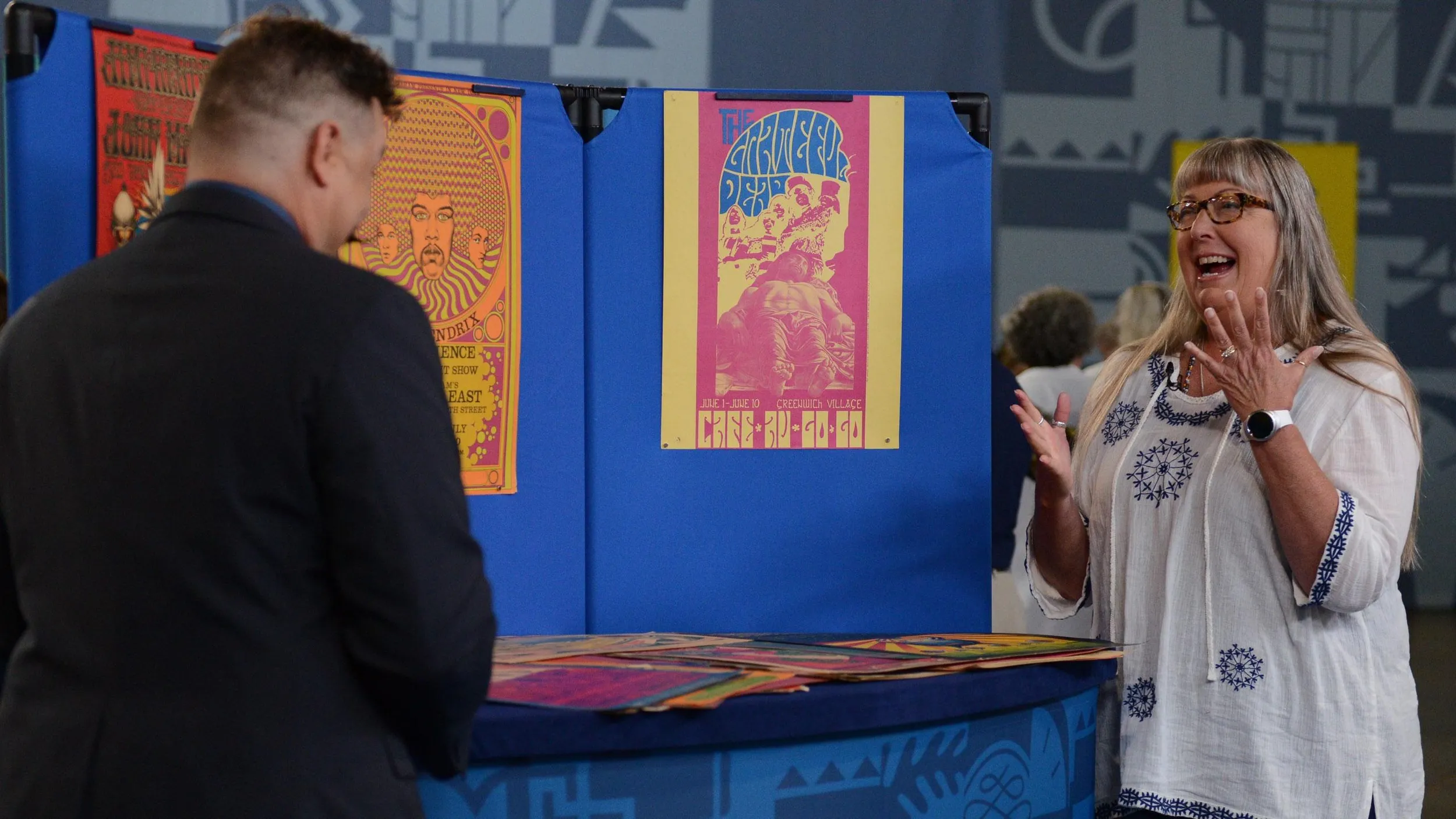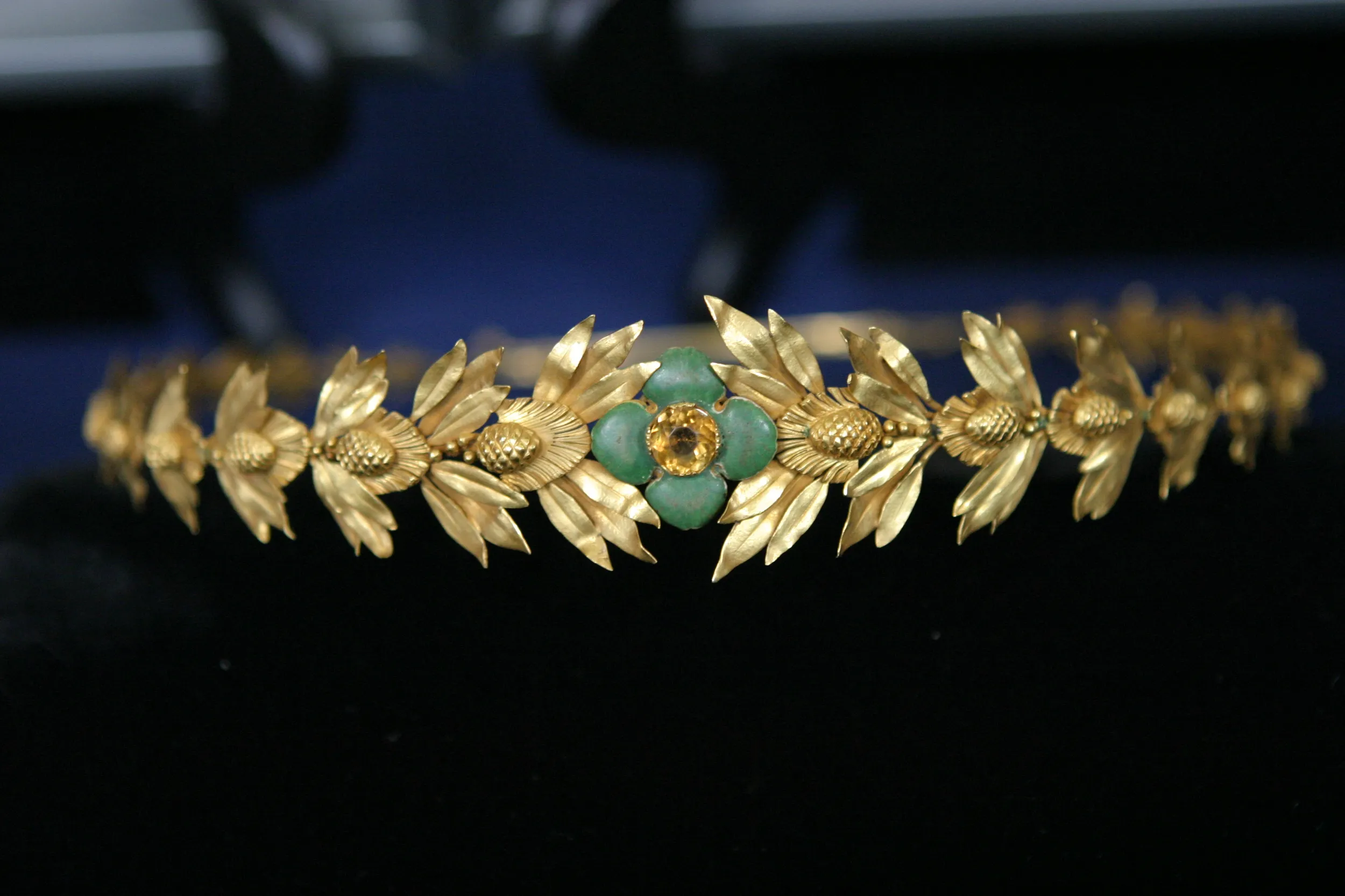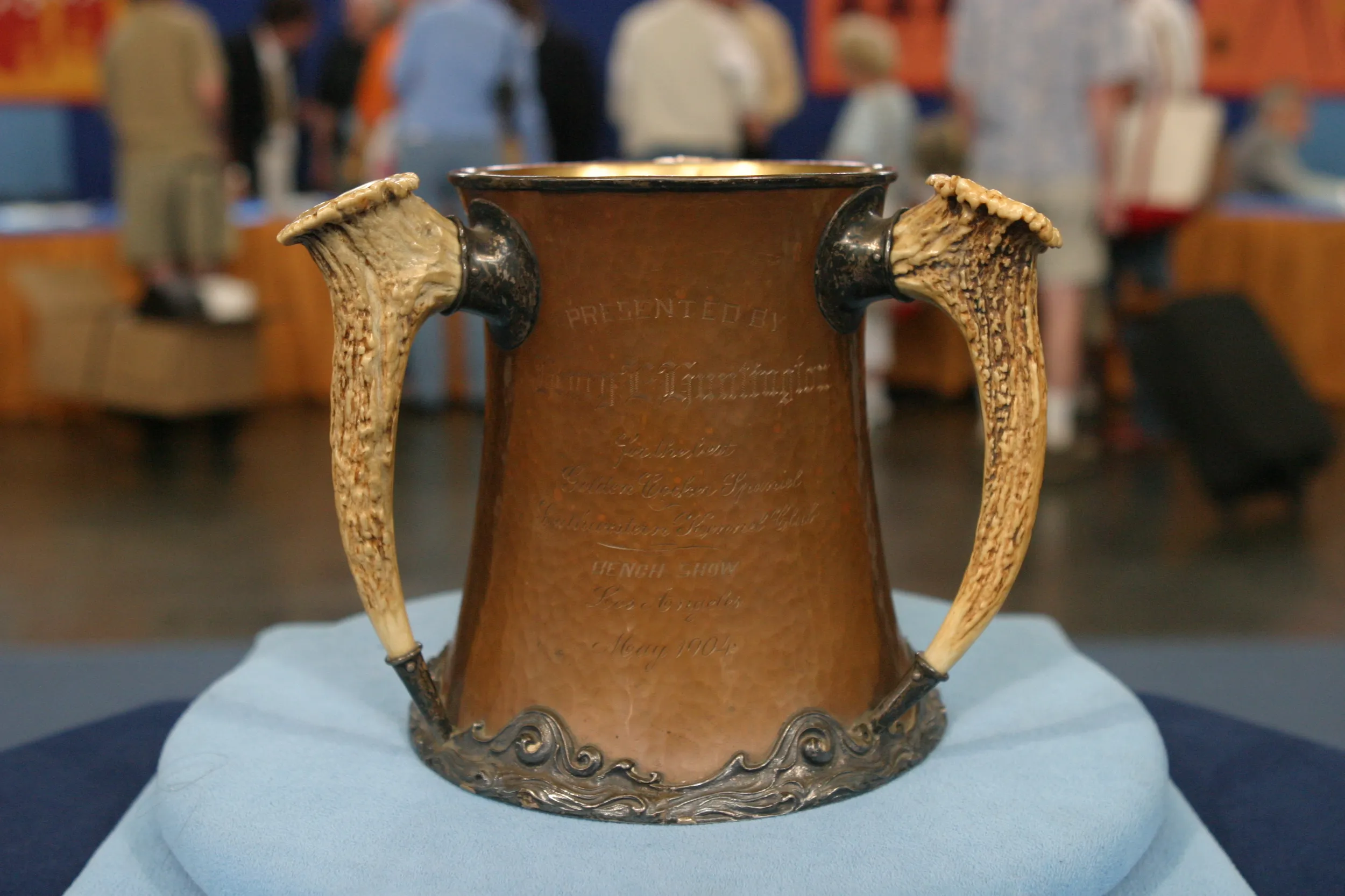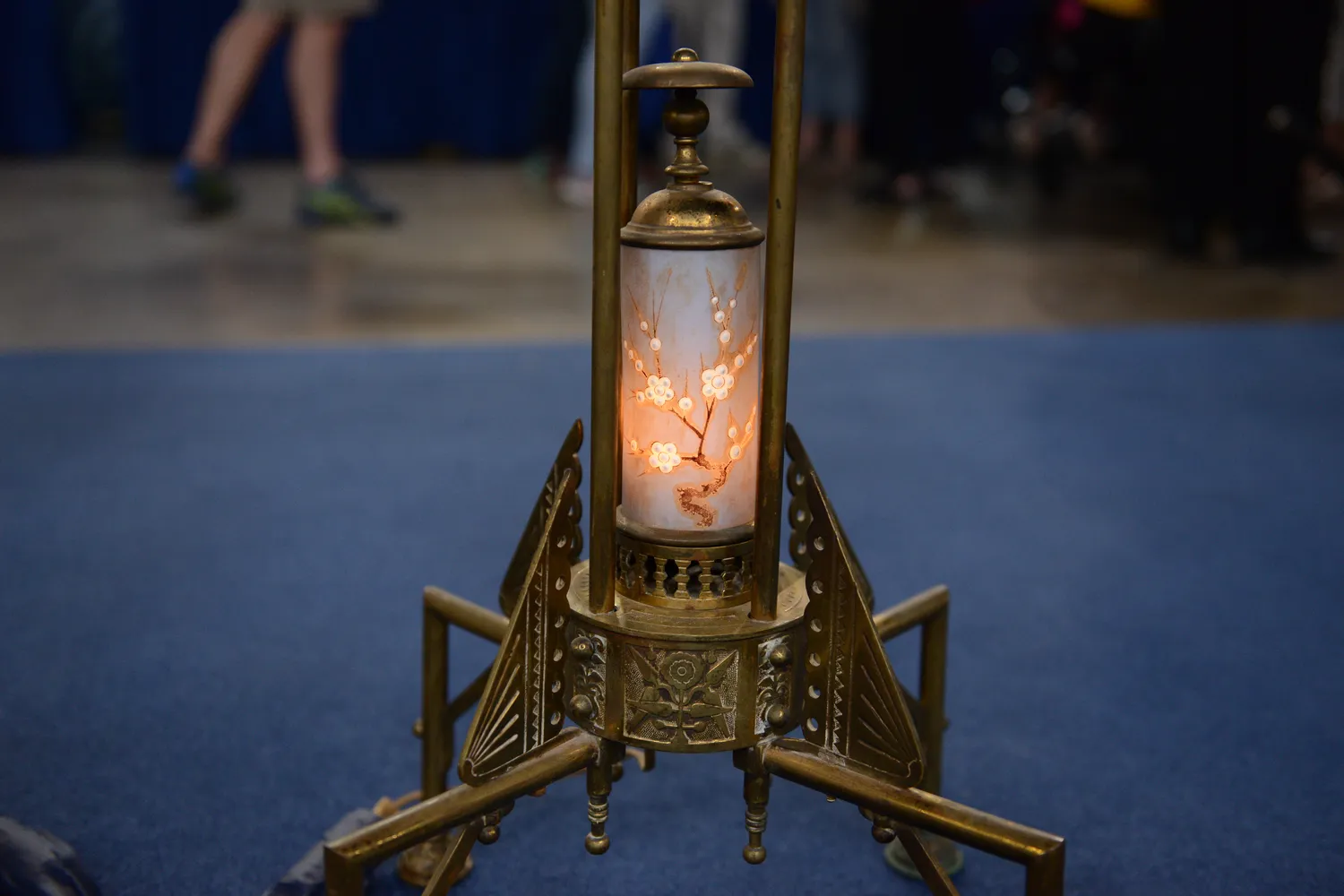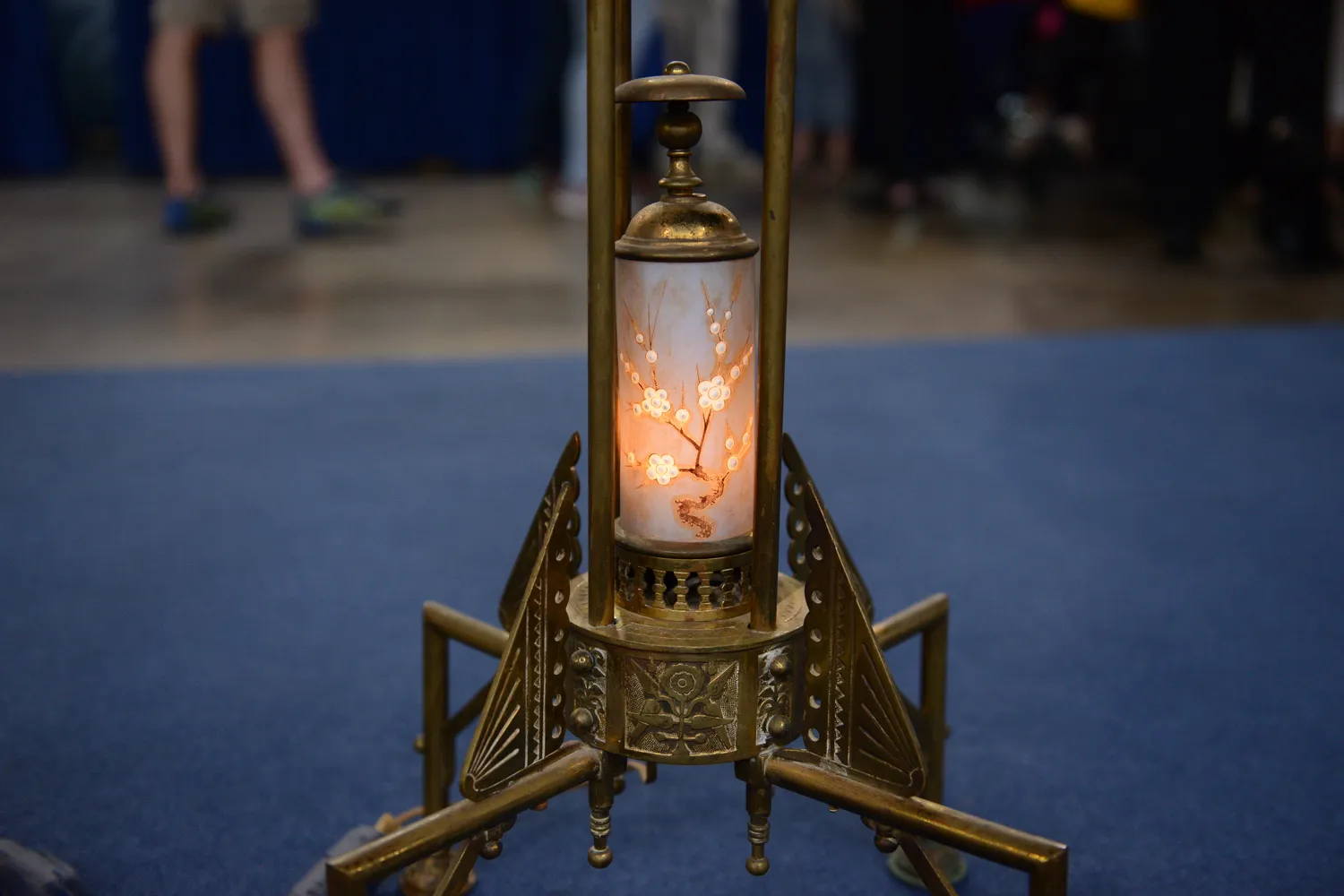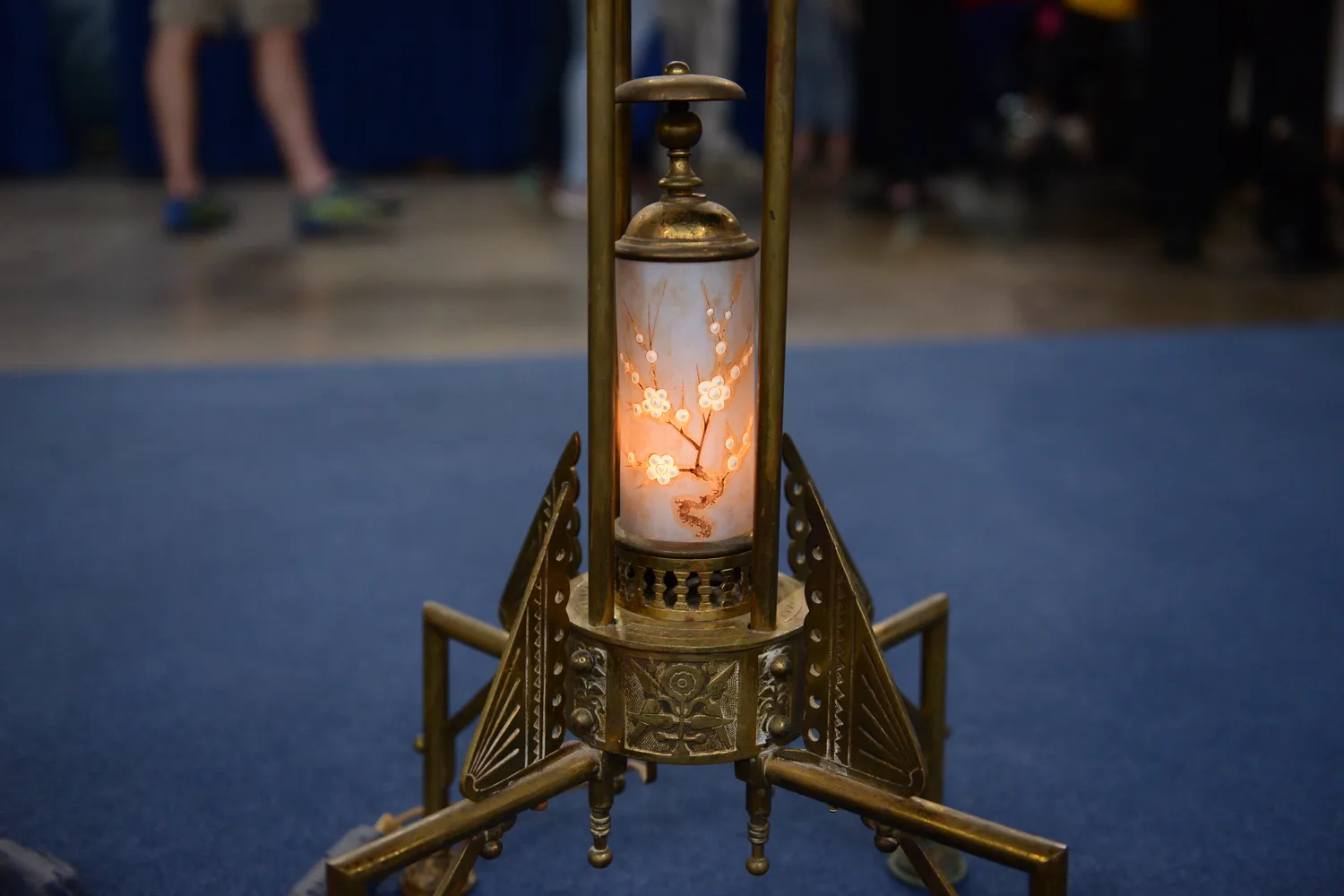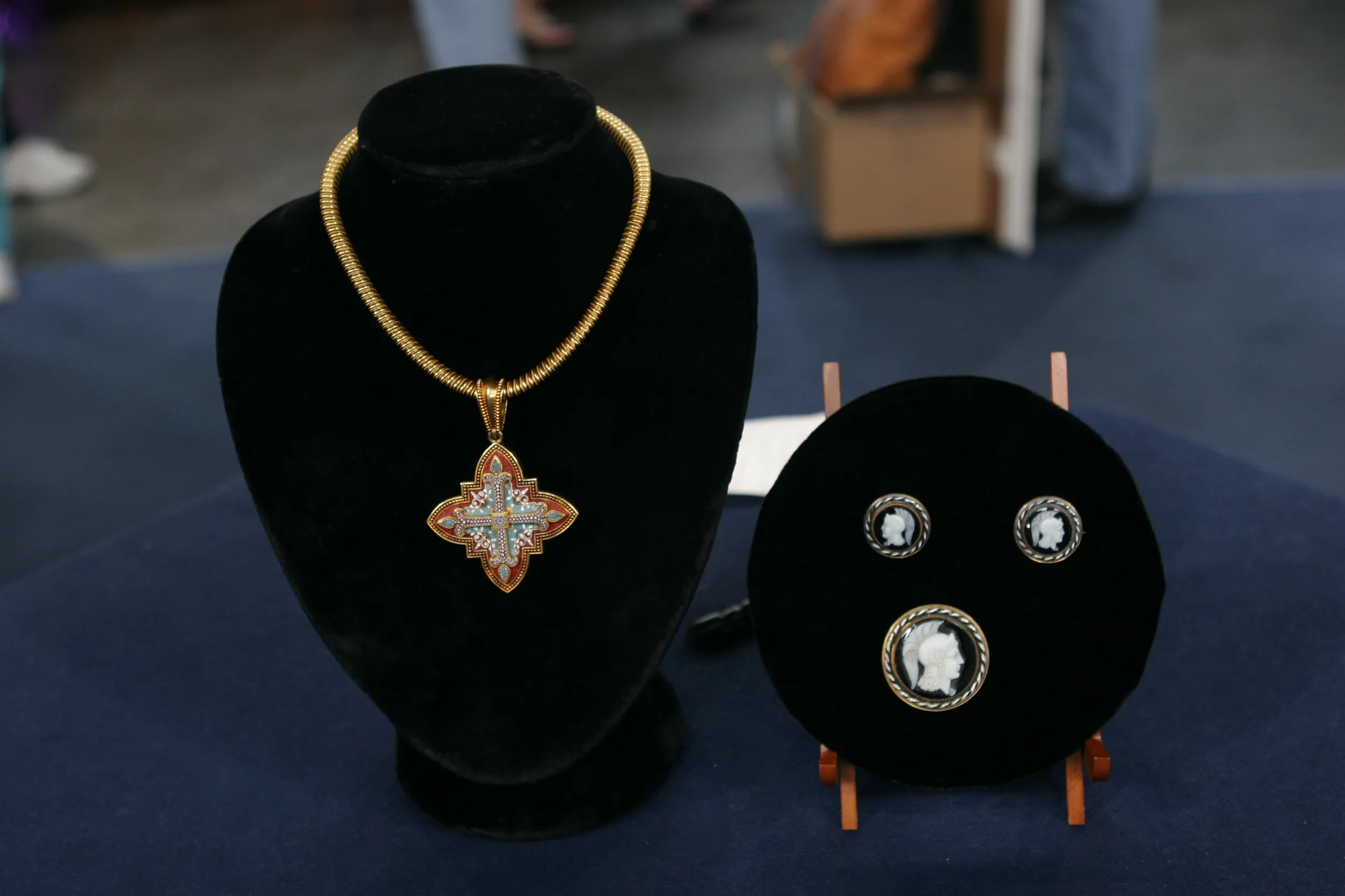GUEST: I brought you two fern stands. I believe they're Bradley & Hubbard from the 1880s to 1890, I think. And I'm hoping to find out what their value is.
APPRAISER: Okay, and how did you get them?
GUEST: I got them through an estate, through another estate that kind of got passed down through estates, and finally I bought them.
APPRAISER: And how much?
GUEST: I really don't remember. They were in the hundreds.
APPRAISER: About how many years ago was that?
GUEST: That I bought them? About ten to 12 years ago.
APPRAISER: Okay, did they come to you as a pair?
GUEST: A pair-- they did.
APPRAISER: They did come to you as a pair, okay. They descended as a pair. Were they really made as a pair, I'm not sure. I think somebody just had two plant stands that they acquired.
GUEST: And they're so different, yeah. And I did research and saw the ANTIQUES ROADSHOW had had one of them back in '07 in San Antonio, I believe, and appraised one, but the value seemed to run from $500 to thousands.
APPRAISER: Yeah. They are made by Bradley & Hubbard, and we know that
because it's featured on the back of their show catalog, or their trade catalog.
GUEST: Right.
APPRAISER: They're typically referred to as plant stands. These are interesting and attractive tables for a number of reasons in my mind. They represent the Industrial
Revolution, where we're mixing art and industry together to form artforms, and this is really what this represents. It's done in the Aesthetic Movement. And it's basically about every object doesn't just have a purpose, but it's to be artful. And as you can see from these, they really are.
GUEST: Yes.
APPRAISER: What's interesting here, though, is the metal. These are made of brass, and they're really a counterpoint to the dark and dreary rooms of the Victorian era. So now we have this bright spot. So you see them in interior views in their original settings and how spectacularly brilliant they are.
GUEST: Right.
APPRAISER: And brass is like silver—these should be polished. You're not doing any harm in polishing them.
GUEST: I have not polished them.
APPRAISER: And they would show that way, and that's the way they were intended to be seen and you're not doing anything to hurt them.
GUEST: Were they electrified early?
APPRAISER: They were not.
GUEST: Ah.
APPRAISER: They were not using electricity as frequently as they are today at the time these were produced. So we don't know when they were electrified.
GUEST: No.
APPRAISER: And if we start from the bottom and just look at this overall stance, we can see they almost look like a rocket ship, you know, with this little platform and the base. It's very explosive, very colorful, that mixture of metal and tile like we see here on the top, this beautiful, hand-painted tile that corresponds with the column when we move down it here. And you can see what happens to these more often than not is that there's damage, and they're so challenging to repair that I think they're oftentimes discarded.
GUEST: Ah.
APPRAISER: So, made in America, inspired after the Centennial Exhibition of 1876,so they're really 1875 to 1885.
GUEST: Okay, all right, good.
APPRAISER: Done in New England, and we know who made these, and Bradley & Hubbard was a really interesting company. At their peak, they employed a thousand people, had showrooms in New York, Boston, Philadelphia, Chicago,
so these aren't one of a kind; they made more than one.
GUEST: Did they have artists do these individually?
APPRAISER: I don't think so; they were commercially done. So they were still hand-painted and finished that way, but I don't think that...they're rarely signed.
We're going to turn them on here so the audience can see. They do come up... I shouldn't say frequently, but you can find them, and prices range from roughly $2,000 to $4,000, so at auction, we'd estimate each at $2,000 to $4,000.
GUEST: Wonderful. Okay, my husband will like to sell them.
(both laughing)

